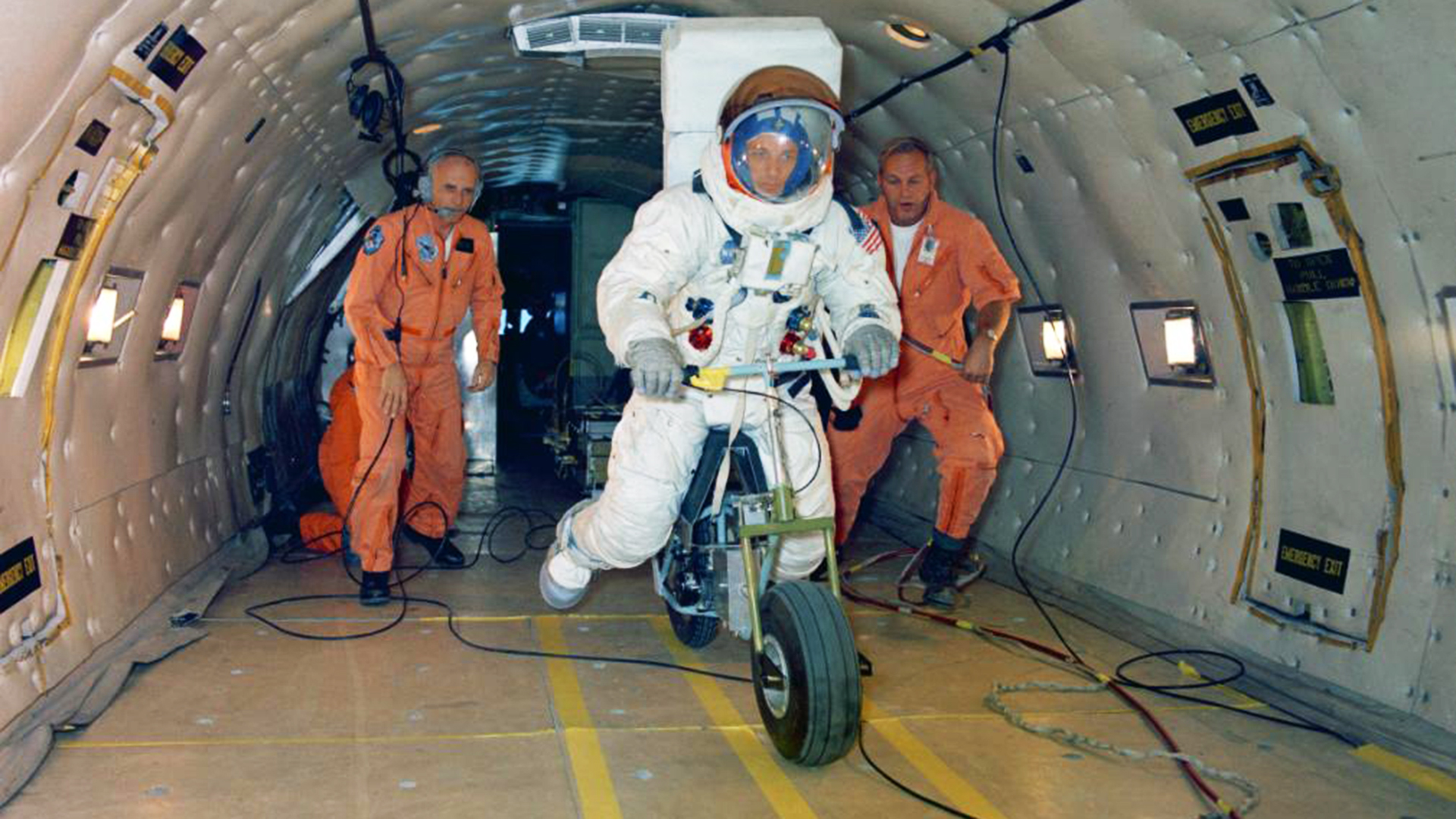

NASA’s Apollo program is most famously known for landing a team of the world’s finest astronauts on the moon in 1969. As the program matured and NASA wanted to explore more of the moon’s surface, it needed a method capable of transporting astronauts across the bright white rock in the sky—a vehicle which was almost this rad electric dirt bike.
Can you imagine the likes of Neil Armstrong or Buzz Aldrin cruising around the moon’s powdery surface on a lunar bicycle? NASA could, or at least a few of its astronauts embarking on missions during the last few years of the Apollo program, as highlighted in a recent tweet from NASA’s History Office.

In the mid-1960s, NASA began working with some of the biggest names in the industry to engineer a solution that would be able to carry astronauts across the surface of the moon faster than walking. It called in the help of Boeing, General Motors, Grumman, Lockheed, and others to figure out the best way to do just that, and one proposed solution was a compact, battery-powered scooter.
While not much official information has been published about this experiment, a few details can be scavenged from the time capsule that is the May 1972 issue of American Motorcycle Association News. According to the AMA, the concept used a five-eighths horsepower electric motor coupled to a 30 amp-hour battery, a combination that allowed the 90-pound contraption to reach speeds of up to seven miles per hour.

Cooling for the brushed electric motor was also theorized to be an issue. The engineers working on the project decided to use the bike’s frame as a cooling mechanism and designed it to disperse heat away from the motor and battery. As a fail-safe, the battery was surrounded by nearly four pounds of beeswax which acted as a kill-switch to prevent overheating. When the wax softened, the bike would be stopped until it cooled and the material became hard once again.
The engineers were making good progress on the bike, but so was the team building a multi-manned vehicle. Eventually, the thought of a one-man excursion became a conversation on safety and the bike project fizzled out. Instead, NASA went with the Boeing-built Lunar Roving Vehicle (LRV) which was sent to the moon from 1971 to 1972 during Apollo missions 15, 16, and 17.
It’s interesting to see such an early concept make its way into the light after decades of being hidden away. Sure, electric bikes are an emerging consumer product nowadays, but we’re talking about something designed over half a century ago that was planned for use in space. I can’t help but gawk at some of the most famous photos of the lunar rover in space and wonder if history would look just a little bit different with two fewer wheels.
Got a tip? Send us a note: tips@thedrive.com